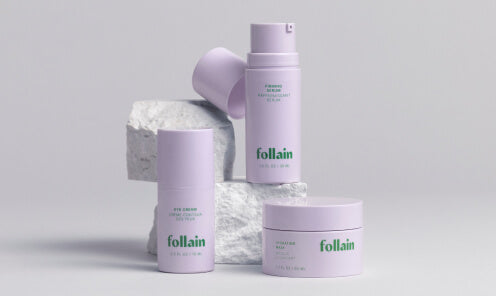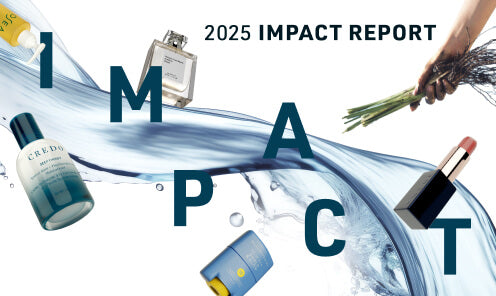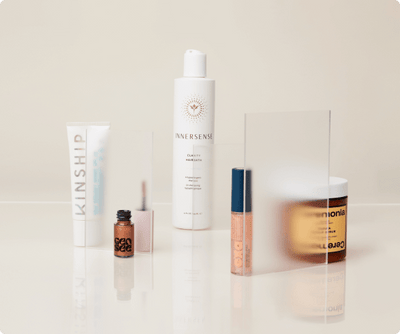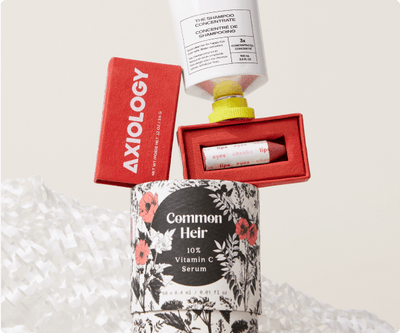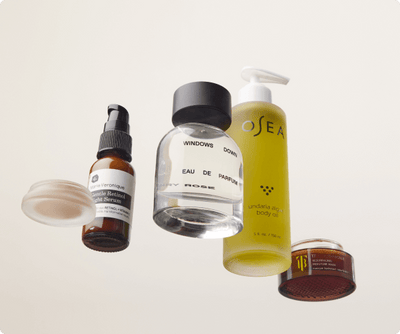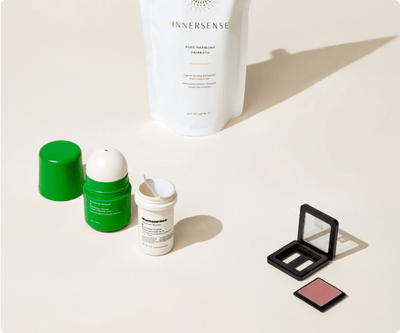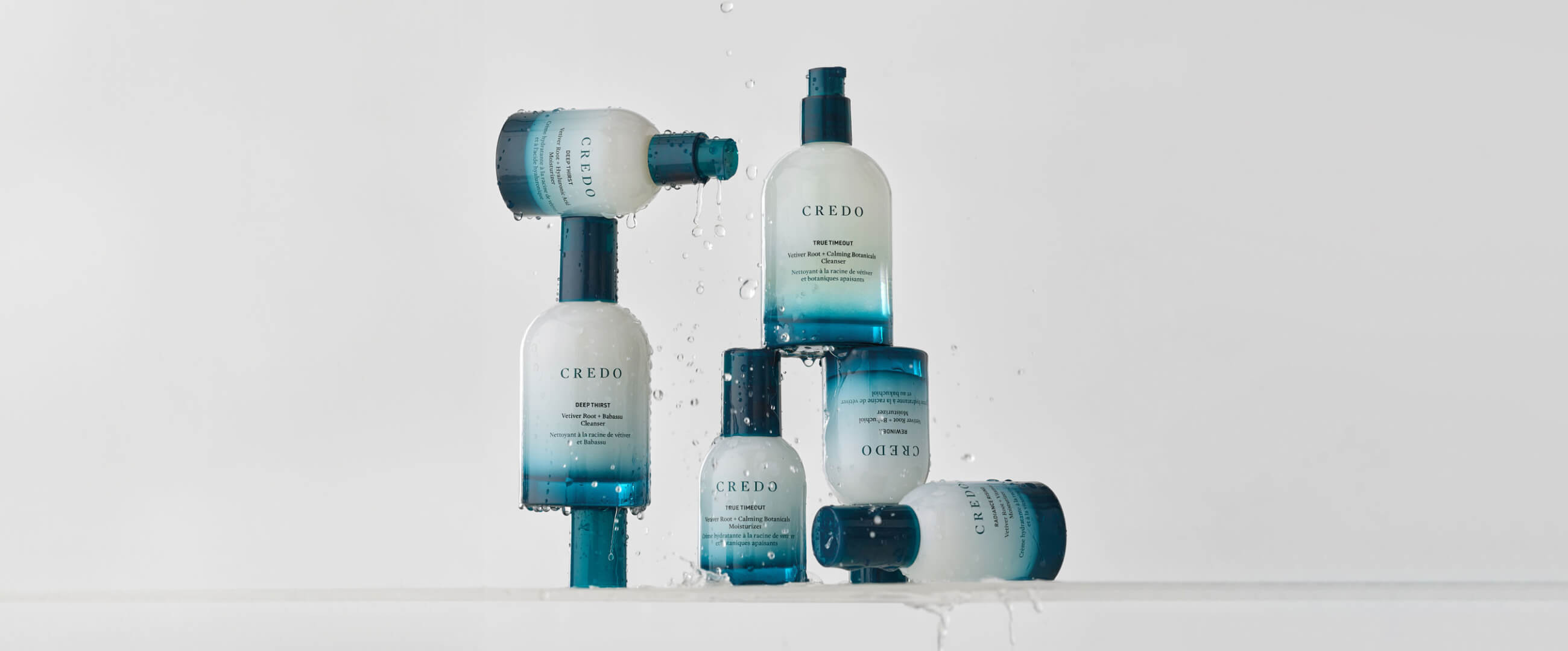

.
The Dirty List® is the foundation of our larger Credo Clean Standard™.
Download The Dirty List®The Dirty List® is the foundation of our larger Credo Clean Standard™.
Download The Dirty List®

.
The Dirty List® is the foundation of our larger Credo Clean Standard™.
Download The Dirty List®The Dirty List® is the foundation of our larger Credo Clean Standard™.
Download The Dirty List®Did you know?
Europe has banned over 1300 ingredients.
The U.S.? Just 30.
at credo we prohibit the use of over 2700 ingredients for your safety.
Clean beauty begins with the ingredients not found in our products.
Our mission is to change the way people think about what goes into products, onto your skin, and ends up in the environment. People are making the connection that when a product washes off down the drain and when the package is empty, ingredients and materials are making their way into the environment. Even still, the beauty industry is under-regulated in the US, and the FDA–the agency that oversees skin care and cosmetics–has historically had very little power to ensure products are safe or sustainable. There are a couple of important legal rules, but for the most part, the industry is self-regulated.
In response to this, Credo introduced the Credo Clean Standard™ in 2018, beauty’s highest standard for safer, more sustainable, ethical, and transparent products. The foundation of our Credo Clean Standard is The Dirty List™ which contains over 2700 chemicals that we prohibit or restrict, usually due to safety and/or sustainability concerns. You can view and download an abridged version of The Dirty List™ here.
Because these ingredients are linked to health or environmental issues, we ask all of our brand partners to avoid ingredients on the Dirty List® when they formulate their products. Some of the ingredients that we prohibit or restrict are linked to the following impacts:
Clean beauty begins with the ingredients not found in our products.
Our mission is to change the way people think about what goes into products, onto your skin, and ends up in the environment. People are making the connection that when a product washes off down the drain and when the package is empty, ingredients and materials are making their way into the environment. Even still, the beauty industry is under-regulated in the US, and the FDA–the agency that oversees skin care and cosmetics–has historically had very little power to ensure products are safe or sustainable. There are a couple of important legal rules, but for the most part, the industry is self-regulated.
In response to this, Credo introduced the Credo Clean Standard™ in 2018, beauty’s highest standard for safer, more sustainable, ethical, and transparent products. The foundation of our Credo Clean Standard is The Dirty List™ which contains over 2700 chemicals that we prohibit or restrict, usually due to safety and/or sustainability concerns. You can view and download an abridged version of The Dirty List™ here.
Because these ingredients are linked to health or environmental issues, we ask all of our brand partners to avoid ingredients on the Dirty List® when they formulate their products. Some of the ingredients that we prohibit or restrict are linked to the following impacts:
Ingredients linked to
Allergies/ irritation
-
BHA (Butylated Hydroxyanisole)
A preservative linked to cancer, skin irritation, and hormone disruption. -
BHT (Butylated Hydroxytoluene)
A Toluene-based preservative linked to skin irritation. -
Hydroquinone
Typically used for skin lightening reasons, it inhibits melanin synthesis, causes skin irritation, and may cause discoloration of the skin. Hydroquinone is a metabolite of the carcinogen Benzene. -
Methyl Cellosolve or 2-Methoxyethanol
This ingredient has been banned in the EU; it’s a solvent that’s used as an additive in perfumes. It can cause skin irritation and may cause effects on the central nervous system, blood, bone marrow, kidneys and liver. -
Methylchloroisothiazolinone and Methylisothiazolinone
These preservatives are banned from use in leave-on cosmetic products in the EU and restricted to very small amounts in rinse-off products. They can cause skin allergies and irritation and may be toxic to the nervous system. -
Resorcinol
Usually used in hair dyes, it’s linked to a host of issues including allergies, irritation, and hormone disruption.
Ingredients linked to
Cancer
-
BHA (Butylated Hydroxyanisole)
A preservative linked to cancer, skin irritation, and hormone disruption. -
Carbon Black
Dark black powder used as a pigment in cosmetics. Linked to cancer and organ toxicity. -
Coal Tar
This antimicrobial, denaturant, and anti-dandruff agent is prohibited in products it has human health and enviromental concerns. This ingredient is a known carcinogen. -
Hydroquinone
Typically used for skin lightening reasons, it inhibits melanin synthesis, causes skin irritation, and may cause discoloration of the skin. Hydroquinone is a metabolite of the carcinogen Benzene. -
Polyacrylamide
Acrylate copolymers are used for various purposes including absorbent, adhesives, binders, and film-formers. Polyacrylamide can break down into acrylamide, a known carcinogen. -
Vinyl chloride
Vinyl chloride is a toxic chemical, used in the production of polyvinyl chloride (PVC), and is known to cause cancer, particularly in the workplace during production. -
Ethanolamines (MEA, DEA, TEA, MEA, ETA)
These ingredients (including DEA/TEA/MEA/ETA) may be contaminated with chemicals like Nitrosamines, which are linked to cancer.
Ingredients linked to
Hormone disruption
-
BHA (Butylated Hydroxyanisole)
A preservative linked to cancer, skin irritation, and hormone disruption. -
Chemical Sunscreens
Some chemical sunscreens have been linked to hormone disruption. Others, like Avobenzone, appear safer but remain understudied. Credo prohibits all Chemical Sunscreens, which include (but are not limited to) Benzophenone, Oxybenzone, and Octinoxate. -
Cyclic Silicones
Cyclic Silicones include Cyclotetrasiloxane (D4), Cyclopentasiloxane (D5), Cyclohexasiloxane (D6), and Cyclomethicone. Data indicates that some of these chemicals may have reproductive, developmental toxicity and/or endocrine disruption concerns. They are also persistent in the environment, and may build up in the food chain. -
Nitromusks and Polycyclic Musks
There are several types of synthetic musks used as fragrance ingredients. Two types, Nitromusks and Polycyclic Musks, have health and environmental concerns ranging from suspected endocrine disruption to widespread environmental persistence, so we prohibit them. -
Parabens
Certain Parabens have been linked to hormone disruption. Out of caution, we prohibit all Parabens, including Butylparaben, Isopropylparaben, Methylparaben. -
Phthalates
Phthalates are plasticizing chemicals. Some appear on product ingredient labels, but many may remain undisclosed, hiding under the term “fragrance.” Since some phthalates have been linked to hormone disruption, we ask our brand partners to avoid using them altogether. -
Polyacrylamide
Acrylate copolymers are used for various purposes including absorbent, adhesives, binders, and film-formers. Polyacrylamide can break down into acrylamide, a known carcinogen. -
Resorcinol
Usually used in hair dyes, it’s linked to a host of issues including allergies, irritation, and hormone disruption.
Ingredients linked to
Toxic to environment
-
Cyclic Silicones
Cyclic Silicones include Cyclotetrasiloxane (D4), Cyclopentasiloxane (D5), Cyclohexasiloxane (D6), and Cyclomethicone. Data indicates that some of these chemicals may have reproductive, developmental toxicity and/or endocrine disruption concerns. They are also persistent in the environment, and may build up in the food chain. -
EDTA (Ethylenediaminetetraacetic acid)
Calcium Disodium EDTA, Tetrasodium EDTA, Trisodium EDTA, etc, are chelating agents, meaning that they bind to metal ions, which inactivates them. These ingredients are not linked to consumer health issues, but they might be a problem for aquatic life since they don't break down in the environment and have been found in waterways. -
Nitromusks and Polycyclic Musks
There are several types of synthetic musks used as fragrance ingredients. Two types, Nitromusks and Polycyclic Musks, have health and environmental concerns ranging from suspected endocrine disruption to widespread environmental persistence, so we prohibit them. Learn more about our fragrance policy here. -
PFAS or PFCs (Perfluorinated Compounds)
There are 3000 Highly Fluorinated Compounds used in many different types of products because of their oil-, stain-, and water-repellent properties. Compounds in this category do not break down in the environment, and many have been linked to a variety of health issues including cancer, hormone disruption, liver toxicity, and obesity. Avoid products with “perfluor” or “polyfluor” as part of the ingredient.
Ingredients linked to
Toxic to human body
-
Aluminum Powder
Elemental aluminum (powder) is the third most abundant element on earth. We are exposed to it through a variety of sources including drinking water, pharmaceuticals. Aluminum can also form as salts or oxides. The toxicity of different forms of aluminum depends in large part on its solubility in water and the pH range. Aluminum compounds appear to be poorly absorbed by the human body, and so Credo permits aluminum oxide (aka alumina), aluminum hydroxide and related compounds as functional ingredients in products. Aluminum powder is a toxicant (at high doses), and it is prohibited from all products. -
Carbon Black
Dark black powder used as a pigment in cosmetics. Linked to cancer and organ toxicity. -
Hydroquinone
Typically used for skin lightening reasons, it inhibits melanin synthesis, causes skin irritation, and may cause discoloration of the skin. Hydroquinone is a metabolite of the carcinogen Benzene. -
Methyl Cellosolve or 2-Methoxyethanol
This ingredient has been banned in the EU; it’s a solvent that’s used as an additive in perfumes. It can cause skin irritation and may cause effects on the central nervous system, blood, bone marrow, kidneys and liver. -
Methylchloroisothiazolinone and Methylisothiazolinone
These preservatives are banned from use in leave-on cosmetic products in the EU and restricted to very small amounts in rinse-off products. They can cause skin allergies and irritation and may be toxic to the nervous system. -
PFAS or PFCs (Perfluorinated Compounds)
There are 3000 Highly Fluorinated Compounds used in many different types of products because of their oil-, stain-, and water-repellent properties. Compounds in this category do not break down in the environment, and many have been linked to a variety of health issues including cancer, hormone disruption, liver toxicity, and obesity. Avoid products with “perfluor” or “polyfluor” as part of the ingredient. -
Toluene
A solvent that is toxic to the immune system, may cause birth defects, and usually found in nail polishes.
Ingredients you might be wondering about
Special cases
-
Beeswax (and other Bee Products)
Credo allows Beeswax, Honey, Pollen and Propolis (all from bees) which are safe, effective ingredients. We ask our brand partners to obtain assurance from their ingredient suppliers that the bees are treated humanely. Bee populations are in big trouble, and that doesn’t bode well for wild plants, crops, or humans. We encourage brands to do the following to help increase the chances for bee health, and to reduce our industry’s negative impact. • Avoid using Royal Jelly • Seek honey, wax and any other bee product from beekeepers that care about the humane treatment of bees • Avoid using/purchasing neonicotinoids (in your garden, home and as a business) -
Carmine
This red pigment (also called Cochineal, Cochineal Extract, Crimson Lake, or Carmine Lake, Natural Red 4 C.I. 75470) is allowed but must be clearly indicated on ingredient labels. It comes from scale insects, such as the cochineal scale, and is often found in color cosmetics. Learn more about Carmine here. -
Chemical combinations
Some ingredients pose little-to-no hazard on their own but may create a new concern when combined. While chemical reactions are hard to assess for their potential impact (and even more difficult for Credo to monitor), we ask our brand partners to use caution and think about consumer health and the environment down the line. -
Colorants
There are natural, naturally-derived and synthetic colorants. We allow all of them in color cosmetic (makeup) products that are meant to impart color. We do not carry colored/dyed skin or body care. Natural and naturally-derived colorants are from plants, minerals, or insects (carmine). Mineral colors are often viewed as healthier or more sustainable than synthetic colors. This isn’t necessarily the case. Most “mineral” colorants were actually made in a lab. And mined minerals can be contaminated with heavy metals (like lead, a known neurotoxin). Some minerals may be mined in unsustainable ways that harm the ecosystem and/or exploit people (including child labor, a problem in India’s mica mines). Some natural pigments can fade faster and disperse more quickly than their synthetic counterparts (though formulating with natural pigments has come a long way). That said, petroleum is not a sustainable feedstock either. So, there are lot of factors at play here! Credo carries gorgeously clean brands that choose ingredients that support their goals— some are super-dedicated to natural, and other brands make a conscious choice to use synthetic colorants, which are likely used at lower percentages than their mineral counterparts. We ask that brands work with their suppliers to control for heavy metal contamination and seek materials from suppliers that do not use child labor. Whatever you choose, we support you and want to keep color cosmetics as fun as possible. -
Dimethicone and Other Linear Silicones
Linear silicones, like Dimethicone and others, can improve skin texture, fill in wrinkles, and help condition the hair. It’s unlikely that these large, stable molecules are a health concern for cosmetics users, but there are a few things you may want to know so that you can make an informed decision: · Silicones do not biodegrade well (or at all); they have a negative impact on the environment. · Depending on the size of the ingredient and your skin’s sensitivity, silicones may clog pores. So those with acne-prone skin may want to avoid products that list silicones as an ingredient. -
Ethoxylated Ingredients
These ingredients are synthetically produced using Ethylene Oxide, a carcinogen. 1,4- Dioxane, another carcinogen that is a manufacturing byproduct, often contaminates ethoxylated ingredients. Thankfully the industry has improved processes and now usually keeps contamination to a minimum. (Both Ethylene Oxide and 1,4-Dioxane don’t appear on ingredient labels.) Credo restricts the use of this ingredient class. With the exception of phenoxyethanol (one of the few preservatives available to clean beauty brands—see below for more info on that ingredient) and several other chemical classes within this ingredient category that have known sustainability benefits, we ask all brand partners to avoid ingredients that have been put through ethoxylation. However, since there are thousands of these ingredients, and suppliers often are not transparent about this chemistry, it can be very difficult to police their use. Here is a short list of common ethoxylated ingredients which are prohibited from Credo products. • Ceteareth-20, Sodium Laureth Sulfate (SLES), Ammonium Laureth Sulfate, and most ingredients ending in “-eth” • Emulsifying Wax: This is usually a blend of Cetearyl Alcohol and Polysorbate 60 or Ceteareth-20 • PEGS: (Polyethylene Glycol) compounds. There are over 1000 PEG ingredients listed in the International Nomenclature of Cosmetics Ingredients (INCI) Database • Polysorbate-20, etc -
Fragrance
Credo prefers natural fragrances over synthetic fragrances. We do allow synthetic fragrances (but no phthalates, nitromusks, or polycyclic musks, as explained in our Dirty List). We require that every single scented product has a disclosed fragrance category (e.g. natural, synthetic) so that our customers have at least this much information. And we go further—we incentivize brands to fully disclose all fragrance ingredients so that consumers can make more informed choices. -
“Glycols”
Polyethylene Glycol, or PEG, is an Ethoxylated ingredient and is on The Dirty ListTM. Credo allows other “glycols” e.g. Polypropylene Glycol. These are synthetic chemicals used to attract moisture to the skin and help keep products stable. These ingredients do not appear to pose a safety risk for most people. However, Propylene Glycol may irritate sensitive skin -
Heavy Metals
Lead, Nickel, Cadmium, and other heavy metals are common at trace levels in both natural mineral pigments and synthetic colorants. While these tiny amounts (in the low parts per million range) pose little risk to human health, many heavy metals can build up in our bodies over time, and cosmetics are not our only exposure source. For that reason, Credo takes this contamination seriously. We believe that heavy metals should be at the lowest possible levels. To that end, we ask that our brand partners to meet the minimums established by FDA for cosmetics, and work with ingredient suppliers to obtain heavy metal testing results on colorants. -
Japanese Honeysuckle
This natural preservative compound looks like a paraben, and in chemistry, structure determines function. So, while we don’t have any data indicating that it is a potential endocrine disruptor (which is the concern with parabens), we encourage brands to avoid it out of precaution. -
Lanolin and Keratin
Lanolin is a safe and effective oil that comes from sheep’s oil glands. Keratin is also derived from sheep’s wool, among other animal sources, though keratin used in cosmetics appears to be from wool. Sheep do not need to be killed or harmed to obtain lanolin or keratin, but sheep farmers often use insecticides on the animals to prevent ticks, lice, etc., and many of those chemicals are known to be toxic. Sheep-raising is a global industry, and currently there are no established certifications or monitoring organizations that ensure humane treatment. We hope that by encouraging our brand partners to ask their suppliers questions—and ideally obtain validation of humane treatment—we can create clear demand for humanely raised and better ingredients. -
Mica
Mica is a mineral commonly used in beauty products, especially makeup, since it imparts sparkle, sheen and brightens. While mica is a safe and natural cosmetics ingredient, it is not "clean" by Credo's standards: Mica is often mined by child workers in India. Child labor (and any unsafe working conditions) doesn't meet our "ethics" criteria. However, boycotting mica isn't going to solve this problem, either. Credo is a member of The Responsible Mica Initiative (RMI), a global "do-tank" committed to establishing a fair, responsible and sustainable mica supply chain in India. RMI's goal is to eliminate unacceptable working conditions and eradicate child labor by 2022. Learn more about this issue on our blog. -
Nanoparticles
Nanoparticles (which range in size from 1 to 100 um, or nanometers) are extremely small particles which have been engineered or micronized to be very tiny. The smaller particle size changes the function of the ingredient, which is why they can be so useful. However, the smaller size could have different health impacts well. A number of beauty companies sell products advertised as containing “non-nano” titanium dioxide and zinc oxide, minerals used in sunscreens and in color cosmetics. But these claims are often misleading. According to EWG, “while particle sizes vary among manufacturers, nearly all would be considered nanomaterials under a broad definition of the term, including the definition proposed in 2011 by the federal Food and Drug Administration.” Credo allows possibly-nano-sized minerals since a) the data on these looks like there is low risk, b) people need SPFs for their health, and chemicals SPFs are not the best option, and c) claims of “non-nano” are often not real. Credo asks companies to avoid new nanoparticles that have no long-term safety or environmental data. We also ask that companies avoid any nanoparticles—even minerals like zinc and titanium dioxide—in products which may be inhaled (sprays and powders). We will keep our eyes on the literature around the safety and sustainability of nanoparticles. -
Palm Oil and Palm-Derived Ingredients
Palm Oil and palm-derived ingredients are found in many consumer products. Palm oil is a natural, effective, highly useful and safe ingredient—and a potentially sustainable crop. Currently, most palm oil is grown and harvested in an unsustainable and destructive manner, killing threatened and endangered species, and wreaking havoc on the local ecosystem, communities, and the climate. The solution is not to prohibit palm oil, though. We need to create a clear demand for sustainably, ethically produced palm oil. We will be working with brands to increase the demand for sustainable palm. -
Petroleum-Derived and/or Synthetic Ingredients
Credo encourages brands to use natural or naturally derived ingredients instead of petroleum-derived ingredients whenever possible, but we do not prohibit all petroleum- derived or synthetic ingredients. Why? Synthetic ingredients can be safe and sustainable, and natural ingredients can be harmful and unsustainable. Clean Beauty isn’t about “synthetic vs natural,” but instead about carefully evaluating ingredient sources for their potential impacts. To that end, we ask that brands to avoid the “dirtiest” of synthetic ingredients (which are on The Dirty ListTM), and to obtain certificates of analysis, and/or manufacturing/growing practices, to address potential contamination issues. -
Phenoxyethanol
Despite being a "controversial" ingredient, phenoxyethanol has a similar safety profile to—or even better than—other commonly used preservatives. Preservatives are necessary to kill/prevent the growth of microbes in any product which contains water, so they are not a "nice to have" type of ingredient, they are a "must have." (Please see our blog on this topic for more info.) The EU Scientific Committee on Consumer Safety published a final opinion on phenoxyethanol in 2016. The take home of the 102-page document: The SCCS considers 2- phenoxyethanol safe for use as a preservative with a maximum concentration of 1.0%--the maximum amount used in products sold at Credo. -
Quaternary Ammonium Compounds
These are a class of chemicals that are commonly used in consumer products. They show up most often as antimicrobial “active ingredients” in disinfectant cleaners, but as also widely used in the beauty industry, usually as conditioning and antistatic agents in hair care products. “Quats” as they’re known, usually have “...onium chloride” in their names, e.g. Benzalkonium Chloride. We prohibit quats as preservatives (there are better options) but allow them as needed for anti-static/smoothing agents (at present, there are very few “natural” options for this function). -
Retinyl Palmitate
As a retinoid, this ingredient may increase sun sensitivity when applied to skin and worn into direct sunlight. However, Retinyl Palmitate is likely of little concern in night creams. -
Talc
Talc is used in a range of consumer products, including color cosmetics and body (talcum) powders. There are two potential concerns regarding talc: 1) the risk of asbestos contamination and 2) the risk of small particles getting into the body through inhalation or perineal (genital) use of talc-based body powder. Credo does not carry talcum powder, and we ask companies using talc in cosmetics to obtain documentation that the talc they are purchasing has been tested for asbestos, and none was found, even at trace levels.





